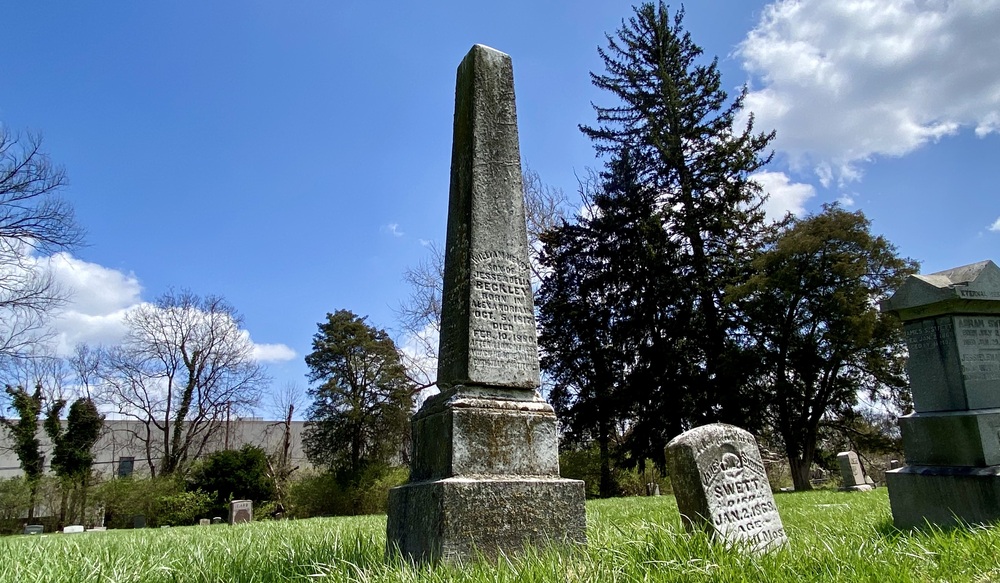Gravesite of William H. Beckley
Underground Railroad Agent

On May 16, 1834, a classified advertisement appeared in the Alexandria (Virginia) Gazette: “RANAWAY, from the subscriber, on the 5th instant, WILLIAM BECKLEY, an indented apprentice to the Ship’s Carpenter’s business, a bright mulatto, about eighteen years of age, about five feet four or five inches high.”
Beckley was indentured rather than enslaved. Still, the man who posted the advertisement, John Humphries, cautioned “all persons” against “harboring or employing said apprentice,” threatening legal consequences. Still, the reward that Humphries offered – “one cent for his apprehension if taken in the District of Columbia, and six cents if taken out of it” – was too small to be much of an inducement.
By 1836, a man matching the description was living in Cincinnati: William Beckley, mixed race, born in Alexandria, Virginia, in 1817, working as a ship’s carpenter.
William Beckley would become one of the leaders of Cincinnati’s African American community. He became a deacon of Union Chapel. And in 1850, Beckley joined Peter H. Clark, John Isom Gaines, and a few others in filing a lawsuit against the City of Cincinnati to protect funding for African American schools. The African American plaintiffs won their suit against the city.
Beckley was also a leader of the Underground Railroad, an associate of Levi Coffin. Beckley’s obituary states that “He was a good friend of his race at the time the Fugitive Slave Law was in force, and his residence on Third street during those troublous times was the home of many an escaping fugitive from his Southern master.”
Perhaps most notably, Beckley was a player in the trial of Margaret Garner. Garner, a fugitive from slavery, was recaptured in Cincinnati. Garner killed her own infant daughter rather than seeing the child returned to slavery. In 1856, Margaret Garner was put on trial in Cincinnati for murder. Garner’s defense attorney, John Joliffe believed that enslaved members of the Garner family should testify at the trial. But pro-slavery court officials refused to serve the subpoenas, citing the Fugitive Slave Act.
John Joliffe suggested to Judge Pendery that the judge should appoint William Beckley to serve the subpoenas. Pendery agreed, naming Beckley as a special marshal of the court.
In 2016, historian Nikki Taylor wrote a book of the Margaret Garner case, called Driven Toward Madness. According to Taylor, “Beckley’s appointment is remarkable because it is, perhaps, the first time in the history of the United States that an African American served as an officer of the court – and a federal court at that.”
William Beckley died on February 10, 1880. When dying, he said, “I am clinging to the Rock; hold on; let no one come between us.” He was buried in United American Cemetery.
The Beckley family stayed prominent in Cincinnati for generations. William Beckley’s daughter Mary Beckley Taylor, who is also buried here, was active in Union Chapel and was president of its Home Missionary Society and its Lincoln Lyceum. She was also head of what was called the “Board of Lady Managers” of what was called the “Colored Orphan’s Asylum.” Mary Beckley Taylor, in turn, was the mother of four women who became teachers in the Cincinnati Public Schools.
Images
